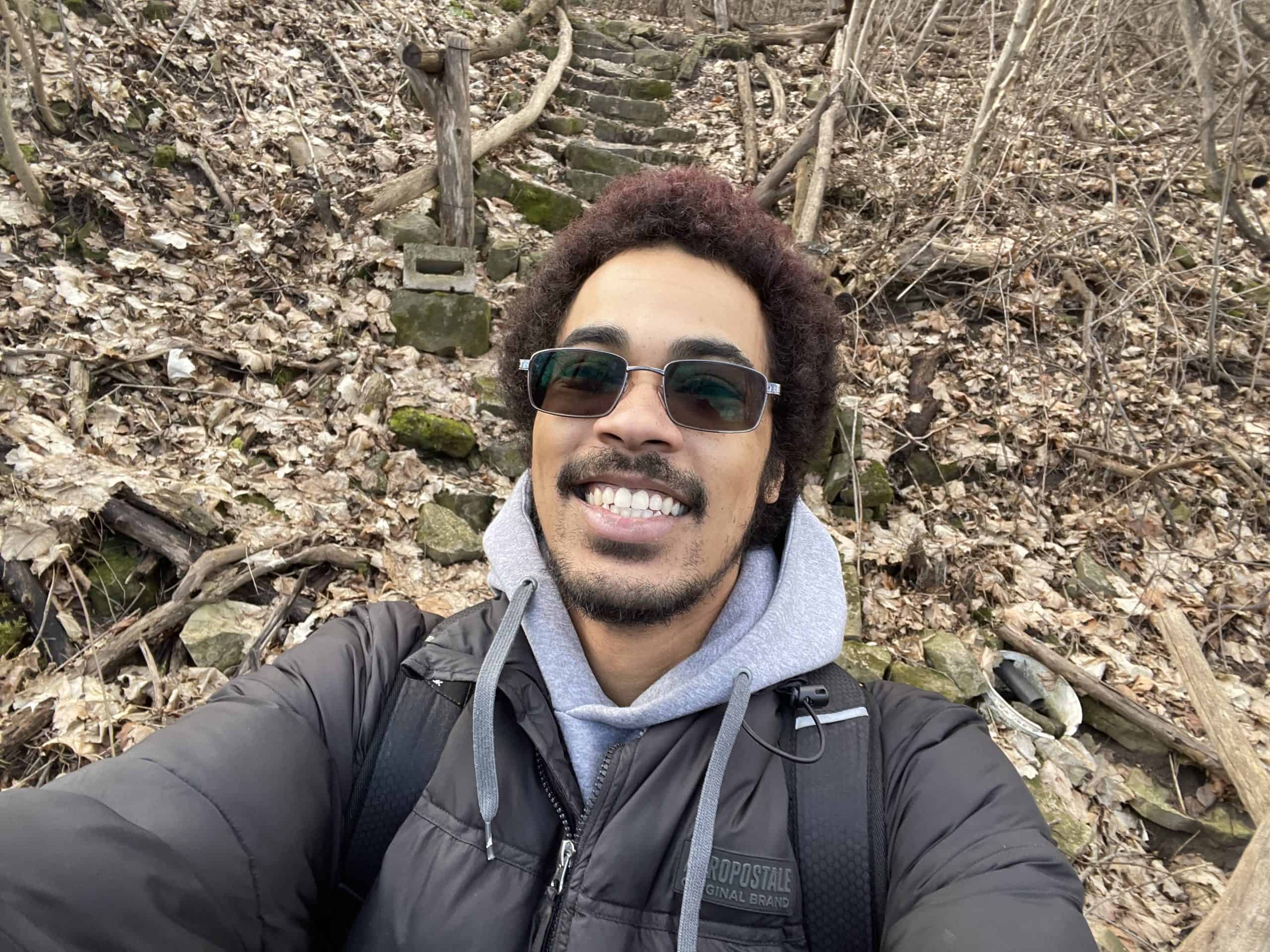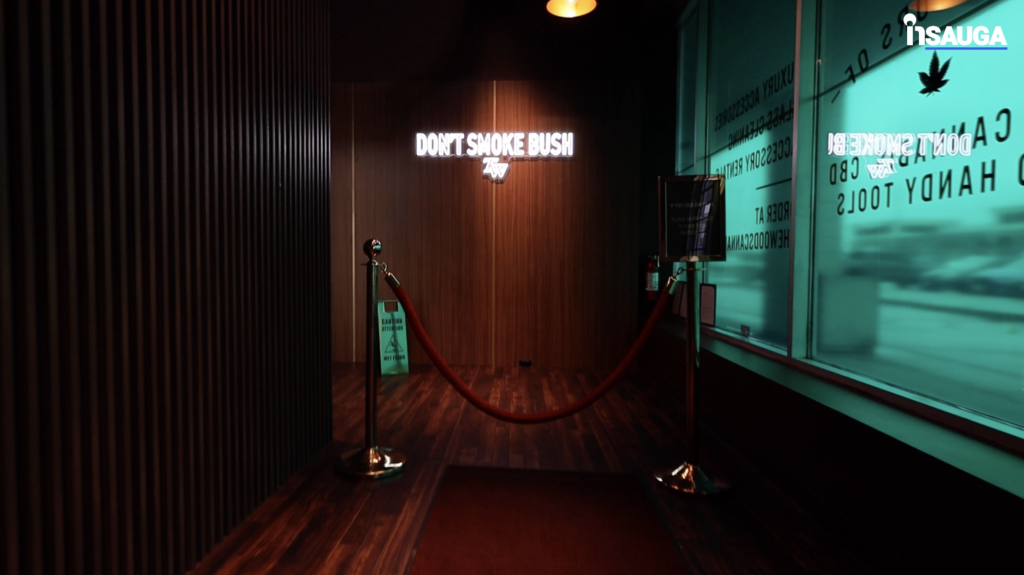Man Tasered during seizure says he’s still in pain, but hopeful change is on the horizon in Hamilton, Ontario
Published February 2, 2024 at 3:35 pm

A Hamilton man who was Tasered after he suffered an epileptic seizure at work in October 2022 says that while the ordeal is never far from his mind, he’s hopeful that his situation will ensure no one else ever goes through what he went through.
Marcus Charles, a father of three who was restrained and Tasered by Hamilton police during a medical episode while working at a Canadian Tire in the Main St. and Victoria Ave. area, recently announced that he, along with the Canadian Epilepsy Alliance (CEA) that’s been advocating for him, is pleased that Crown dropped all three charges laid against him in the aftermath of the Oct. 3 incident.
But while he’s relieved that he no longer has to be in court for something he had no control over, he says he’s still feeling the impacts of that fateful fall day 15 months later.
“I am feeling a lot better that I’m not labelled and looked at as a criminal,” Charles told hamilton.insauga.com.
“I feel like that moment changed everything in my life, to be honest. From relationships, from work, from mental health and my stability and other things.”
Charles, who has not yet returned to work due to injuries sustained during the seizure, says that while the fallout has been immensely challenging both physically and emotionally, he’s hopeful that the seriousness of his situation will lead to more care being taken with others suffering from medical episodes.

Charles in the hospital after the incident. Photo courtesy of the CEA’s change.org petition.
“If [something like this can] happen to me, it can happen to anyone. If [what happened to me] saves anyone, I’ll take that.”
On Jan. 31, the CEA announced that the Crown dropped all charges against Charles, which included assault, assaulting a police officer, and assaulting a police officer causing bodily harm.
The case gained significant attention after a video surfaced shortly after the incident that showed Charles, then 27, being pinned down and tased by police outside of his workplace.
Charles says he had a seizure before the altercation with police and that paramedics had been called to the scene to assist him before police arrived.
Police were called to the store when Charles reportedly became combative with first responders.
Charles, who was diagnosed with epilepsy after being injured during a basketball game when he was 21, said that Oct. 3 was not the first time he had a seizure at work and that in previous situations, his manager, who was educated on how to respond to seizures, was able to help him through the episodes.
Charles said his manager can be heard in the video telling police that he was having a seizure.
“He was a safe voice but things started turning when the paramedics came to me,” Charles says, adding that he was still unaware of his surroundings when two paramedics attempted to put him on a stretcher.
“When you have a seizure, you have strength you didn’t know you had, and I was still in that state when they were trying to get me on the stretcher. I was incoherent and I was told I hit them,” he says.
“I didn’t know that until I woke up and tried to put my hands to my face and I realized I couldn’t lift my hands. People were around me and telling me to stop. My ears were ringing. I guess they thought I was still being crazy, and that’s when they tased me the second time.”
Charles says that when he fully came to in the hospital, he was handcuffed to the bed.
“The first couple weeks, I had nightmares about the situation. You think it’s a dream when it’s happening and then people at the hospital tell you that yes, it happened.”
In a statement, the CEA, which has been advocating for Charles and other people with epilepsy, said that the incident left Charles with “multiple injuries.”
“He has not gone back to work. He is still dealing with healing and pain. He can’t lift his arm too high without feeling like it’s going to separate,” Trevor Gordon, a spokesperson for the CEA, told hamilton.insauga.com.
“He has headaches and migraines and his sleep schedule is out of wack.”
Gordon says that while he’s pleased the charges were ultimately dropped, he is frustrated that the process took so long and that police are seemingly not accessing educational materials regarding epilepsy that are available to them.
“The frustration about all of this is that he just had a seizure. If the police did nothing and just stood there and watched the seizure, it would have been a million per cent better,” he says, adding that epilepsy training created by the CEA is in the police training portal.
According to the CEA, epilepsy and seizure response training for police officers was developed by Epilepsy Ontario and officers have access to the training through the Canadian Police Knowledge Network (CPKN).
Gordon says the training was developed after an off-duty police officer in Ottawa who was newly diagnosed with epilepsy had a seizure and was Tasered by officers who were unaware he was having a medical episode.
The CEA says that while the training is accessible, it’s currently only available in English and requires a fee.
“The CEA is working to eliminate the fee to access the training and develop an equivalent offering in French,” the organization said in a statement.
Hamilton police say that while they accept the Crown’s decision, they believe their offices acted appropriately based on what they knew at the time.
“We respect the Crown’s decision. Our officers are called to respond to dynamic and rapidly evolving situations every day. While this was an unfortunate incident, the Crown acknowledged our officers responded lawfully and reasonably to the situation,” a Hamilton police spokesperson said in an email to hamilton.insauga.com.
According to the Crown, charges were ultimately dropped after prosecutors agreed that Charles’ actions “were not a result of criminal intent, but rather a function of the immediate effects of a significant epileptic seizure.”
The Crown also found that police acted “lawfully and reasonably, based on the information known to them at the time.”
Hamilton police say training for epilepsy has been incorporated into its mandatory training for its members.
Gordon says training for first responders is crucial and that it’s upsetting that available training wasn’t adhered to, possibly because it’s not yet required.
“Tasing him was not the way to handle the situation. When you research first aid, you learn never to hold someone who is seizing down. There’s police training that all officers have access to. It’s sitting in their portal, this course. The frustration is that it’s not a mandatory course.
Charles says the lingering pain from the incident continues to sideline him and keep him from going fully back to his old life.
“My collarbone on the right side and my right shoulder are still messed up to this day,” he says.
“I’ve had seizures before where I fell and hurt myself, but this one feels a lot different and it feels like it still happened yesterday, pain-wise.”
He says that the pain often keeps him awake at night and interferes with his ability to make it to early morning physiotherapy sessions. He also says the incident factored into the dissolution of a long-term relationship and that the injuries stemming from the seizure affected his two young daughters.
“I looked so bad. I was so swollen. I’ve never looked like that after a seizure before. I had road rash burns for two months. It was horrible and a rough reminder every time I looked in the mirror. [My children] were scared when they saw me. It was a whole scary process for everyone.”
He also says that since the incident, he’s told loved ones not to call an ambulance during one of his seizures, as he’s too terrified of a similar incident unfolding.
“I always tell people now, that when I have a seizure, don’t call an ambulance. I don’t want a round two of that situation.”
Charles says that while he’s still struggling to get back to the ‘old’ Charles who made music and loved playing basketball, he’s grateful to be alive and hopes his story will bring about positive change.
“If this happened in the States, I would have been 100 per cent dead for sure,” he says, adding that his community and the CEA rallied around him in the aftermath of the incident.
“Trevor [from the CEA] made sure my story was pushed out and he’s kept me in the programs to stay in tune and educated. I’m thankful to everyone who supported me–the people who signed my change.org petition, the people who sent nice messages, etc. I used to feel like the only person with epilepsy but now people tell me they have it, too. Hopefully, this won’t happen to anyone else.”
He hopes that, in time, he can use his experience and big personality to help others even more.
“I want to join groups and maybe be a Big Brother or leader in a group. My body can’t do the work I really want to do but I can make people smile and send the message across, so that’s something I’m definitely looking to do in the future,” he says.
“Ever since my incident went viral, I’m seeing a lot more changes coming into effect. I’m happy to be the voice of change.”
INsauga's Editorial Standards and Policies








